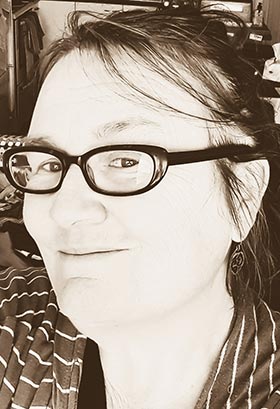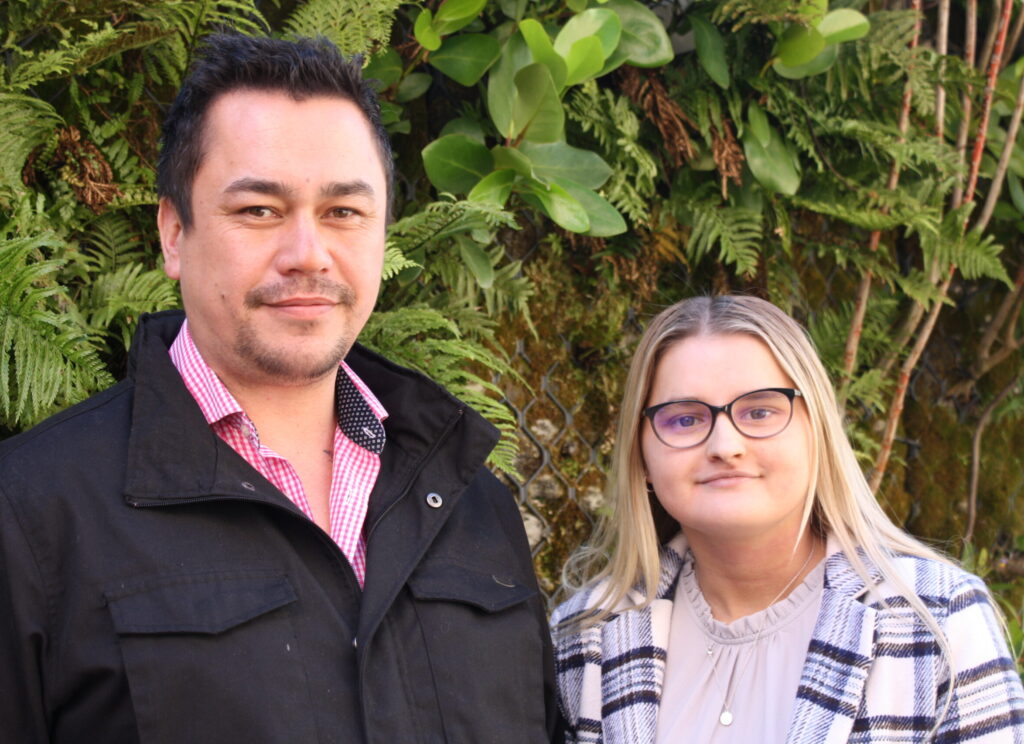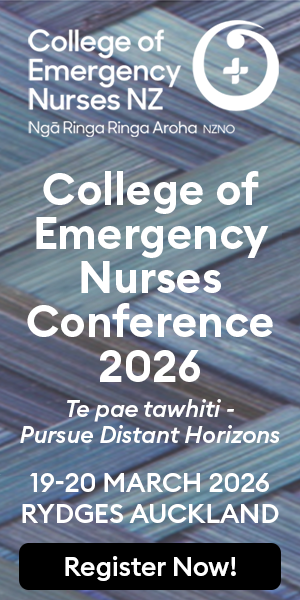The current nursing workforce crisis had been anticipated as far back as the early 1990s. It appears successive nursing and health workforce reports consistently promoted the same recommendations — that serious investment needed to occur if New Zealand was to sustain a nursing workforce that would endure the pending landslide of an increasingly ageing population.1,2,3,4,5,6,7,8,9

There is no doubt that an absence of political will by successive governments, along with ineffective nursing leadership, has contributed to the situation we now find ourselves in. This has been demonstrated by the lack of urgency to meaningfully address nursing workforce deficits. Instead there has been “tinkering around the edges” of the domestic workforce, while becoming increasingly reliant on filling the void with internationally qualified nurses (IQNs). IQNs currently represent 27 percent of the New Zealand nursing workforce, with projections of up to 40 per cent.10
This lack of serious investment in the domestic nursing workforce highlights the undervaluing and marginalisation of a predominantly female occupation. I say this as I enviously compare our situation with that of medicine, a predominantly male occupation. That has seen considerable investment by government in recent years — an investment that appears to be paying off with increases in the medical workforce and its diversity as a consequence.11
Māori have been unwilling participants in a 40-year experiment, and it’s evident that this experiment has been of very little benefit to Māori nursing.
Most frustrating has been this incessant drive to seek our nurses from overseas. My frustration was heightened recently by the Government’s decision to make available financial assistance to IQNs of up to $10,000 when seeking registration in New Zealand.12,13 I understand that we need nurses to fill our current workforce gaps, but my frustration lies with Māori nursing workforce inequity and the decades of under investment.
Since the introduction of the neoliberal changes that saw nursing move away from an apprenticeship hospital-based training to an academic-orientated profession, we have seen very little increase in the Māori nursing workforce.
Data on the Māori nursing workforce before these changes is scant. What we do know is the current system disadvantages Māori in so many ways. This is demonstrated through the ongoing static state of the Māori registered nursing workforce (around seven per cent of the total nursing workforce) for the last 40 years10,14 — glaring evidence that indeed something needs to change.

Many factors contribute to Māori student nurse attrition. One of the most significant factors is economic hardship, and the recent COVID-19 pandemic has only added to the burden.15,16,17,18
To address the workforce inequity, I believe it is time to rethink the way nursing students are funded to do their studies in Aotearoa, particularly for Māori. I would go as far as suggesting that an equity-orientated funding model, such as “earn as you learn”, should be considered an appropriate intervention to seriously address the under-representation of Māori in the nursing workforce.
There are a number of examples of “earn as you learn”/apprenticeship models being implemented in nursing programmes around the world.19
Here in New Zealand there have been some small but successful examples of similar models being implemented, but the ongoing viability of these programs are uncertain.20,21 A primary focus of any New Zealand model must be its long-term sustainability to alleviate economic hardship via a pathway that provides a salary and minimises student debt. I believe such a program would be a game changer.
I believe it is time to rethink the way nursing students are funded to do their studies in Aotearoa, particularly for Māori.
That suggestion may provoke those ardent academics out there who foresee any type of apprenticeship model for nursing education as harking back to the “bad old days”. However, Māori have been unwilling participants in a 40-year experiment, and it’s evident that this experiment has been of little benefit to Māori nursing — surely the status quo can no longer be rationally defended.
The recent formation of the Workforce Taskforce (https://www.tewhatuora.govt.nz/whatshappening/work-underway/taskforces/) to look at priority workforce gaps brings together Te Whatu Ora (Health New Zealand) and Te Aka Whai Ora (Māori Health Authority) with a range of health sector representatives, including a couple of nursing voices (NZNO’s professional nursing services manager Mairi Lucas and Māori provider Te Puna Hauora Matua o Hauraki chief executive Taima Campbell).

The taskforce will provide recommendations on future health workforce development approaches and the investment required to make transformational changes.12,22 What this transformational change may mean for nursing is yet to be determined. However,any new investment will likely be limited and the demand for it highly competitive.
I believe it is time to rethink the way nursing students are funded to do their studies in Aotearoa, particularly for Māori.
Up until now, most of the costs associated with educating nursing students have been spread between the Tertiary Education Commission, the Ministry of Health and the Ministry of Social Development. This funding structure has existed in numerous forms for the last 40 years and a rigorous review of how these government agencies impede or enhance our nursing workforce is well overdue.
When the Government talks about transformational change, this is where it actually needs to occur. Intersectoral collaboration that leads to comprehensive analysis of how much it currently costs this country to educate a nurse may prove to be an insightful activity.

A desktop analysis (albeit very primitive) suggests that pulling together all current investment/expenditure on the education of a student nurse, an “earn as you learn” model could quite possibly turn out to be cost-neutral.
The pressures on the nursing workforce are real, and things are going to get worse before they get any better. We need a workforce strategy that is focused on growing our domestic nursing workforce, that identifies urgent workforce needs, addresses inequities, and has sustainable solutions and targeted recommendations.
I believe such a programme would be a game-changer.
However, history has shown us that all the best strategies in the world are not worth the paper they are written on, if a government isn’t willing to meaningfully address the issues at hand. This is where nursing leadership needs to effectively and adamantly advocate on our behalf.
My greatest fear, with the formation of the new health entities, is that among the changes,nursing workforce development will continue to be marginalised and that any response will be small, ineffective and unsustainable. The Government’s recent release of the Te Pae Tata Interim New Zealand Health Plan 202212,22 has unfortunately not really allayed my fears.
Pipi Barton (Ngāti Hikairo ki Kāwhia), RN, MPhil(nursing), is a nursing lecturer at NorthTec and a PhD student at AUT. Her PhD research is on ‘Examining strategies for increasing the recruitment of Māori into nursing’.
References
- Cook, L. (2009). A Nurse Education and Training Board for New Zealand — A report to the Minister of Health. (https://www.moh.govt.nz/notebook/nbbooks.nsf/0/9943A4089F23EF13CC2576150007745F/$file/nurse-education-training-board-nz-aug09-v2.pdf)
- Health Workforce Advisory Committee. (2001). The New Zealand Health Workforce: A stocktake of issues and capacity 2001. (https://www.health.govt.nz/system/files/documents/publications/hwac-stocktake2001-introduction.pdf)
- KPMG. (2001). Strategic review of undergraduate nursing education: final report to the Nursing Council. Nursing Council of New Zealand.
- Ministry of Health. (1998). Report of the Ministerial Taskforce on Nursing — Releasing the potential of nursing. (https://www.moh.govt.nz/notebook/nbbooks.nsf/0/380F282D7CAEDADC4C25669B007C00CA/$file/report-ministerial-taskforce-nursing.pdf)
- Ministry of Health. (2006). Health workforce development: An Overview. (https://www.health.govt.nz/publication/health-workforce-development-overview)
- Nana, G., Stokes, F., Malano, W., & Dixon, H. (2013). New Zealand Nurses: Workforce Planning 2010-2035.
- Ratima, M., Brown, R., Garrett, N., Wikaire, E., Ngawati, R., Aspen, C., & U, P. (2008). Rauringa Raupa: Recruitment and Retention of Māori in the Health and Disability Workforce. (https://www.health.govt.nz/publication/rauringa-raupa-recruitment-and-retention-maori-healthand-disability-workforce) Ministry of Health.
- Te Rau Matatini. (2009). Ngā wawata o ngā neehi Māori me nga tapuhi: Responses from Māori nurses and midwives nationally.
- Te Rau Matatini, & Te Ao Māramatanga. (2015). Māori Mental Health Nursing: Growing our workforce. (https://terauora.com/maori-mental-health-nursing-growing-our-workforce/)
- Nursing Council of New Zealand. (2020). The New Zealand Nursing Workforce: A profile of Nurse Practitioners, Registered Nurses and Enrolled Nurses 2018-2019 (https://www.nursingcouncil.org.nz/NCNZ/News-section/newsitem/2020/2/Council_publishes_Workforce_Report_2018-2019.aspx).
- Medical Council of New Zealand. (2020). The New Zealand Medical Workforce in 2020. (https://www.mcnz.org.nz/assets/Publications/Workforce-Survey/78253ef9cd/Workforce-Survey-Report-2020.pdf)
- Te Whatu Ora. (Retrieved October 31, 2022a). Workforce Taskforce Update. Issue 1, October 2022. (https://www.tewhatuora.govt.nz/assets/Taskforces/Workforce-Taskforce-Update-21-October-2022.pdf)
- Te Whatu Ora. (Retrieved October 31, 2022b). Internationally qualified nurses CAP fund. (https://www.tewhatuora.govt.nz/for-the-health-sector/nursing/internationally-qualified-nurses-capfund/)
- Wilson, D., Barton, P., & Tipa, Z. (2022). Rhetoric, racism, and the reality for the Indigenous Māori Nursing Workforce in Aotearoa New Zealand. (https://ojin.nursingworld.org/table-ofcontents/volume-27-2022/number-1-january-2022/rhetoric-racism-and-the-reality-for-theindigenous-maori-nursing-workforce/#Nana) The Online Journal of Issues in Nursing, 27 (1), 1-20.
- Barton, P., & Wilson, D. (2021). The experiences of Māori nurse educators in undergraduatenursing programmes and the impact on recruitment and retention. A report to NgāManukura o Āpōpō.
- Chittick, H., Manhire, K., & Roberts, J. (2019). Supporting success for Māori undergraduate nursing students in Aotearoa/New Zealand. Kai Tiaki Nursing Research, 10(1), 15-21.
- Foxall, D. (2013). Barriers in the education of indigenous nursing students: A literature review. (https://pubmed.ncbi.nlm.nih.gov/24575608/) Nursing Praxis in New Zealand, 29(3), 33-39.
- Wilson, D., McKinney, C., & Rapata-Hanning, M. (2011). Retention of indigenous nursing students in New Zealand: A cross-sectional survey. Contemporary Nurse, 38 (1-2), 59-75. https://doi.org/10.5172/conu.2011.38.1-2.59 (https://doi.org/10.5172/conu.2011.38.1-2.59)
- Devereux, E. (16 May, 2022). Nurse degree apprenticeship hits milestone of 6000 students. (https://www.nursingtimes.net/news/workforce/nurse-degree-apprenticeship-hits-milestone-of-6000-students-16-05-2022/) Nursing Times.
- Adams, S., & Davis, J. (August 31, 2022). Te wero, our challege, to grow our own workforce. Kaitiaki Nursing New Zealand.
- Yates, A. (September 24, 2022). New Auckland City Hospital ‘Earn and Learn’ programme to help tackle nursing staff shortage. (https://www.newshub.co.nz/home/newzealand/2022/09/new-auckland-city-hospital-earn-and-learn-programme-to-help-tackle-nursingstaff-shortage.html) Newshub.
- Te Aka Whai Ora — Māori Health Authority, & Te Whatu Ora — Health New Zealand.(2022). Te Pae Tata Interim New Zealand Health Plan 2022. (https://www.tewhatuora.govt.nz/aboutus/publications/te-pae-tata-interim-new-zealand-health-plan-2022/)



